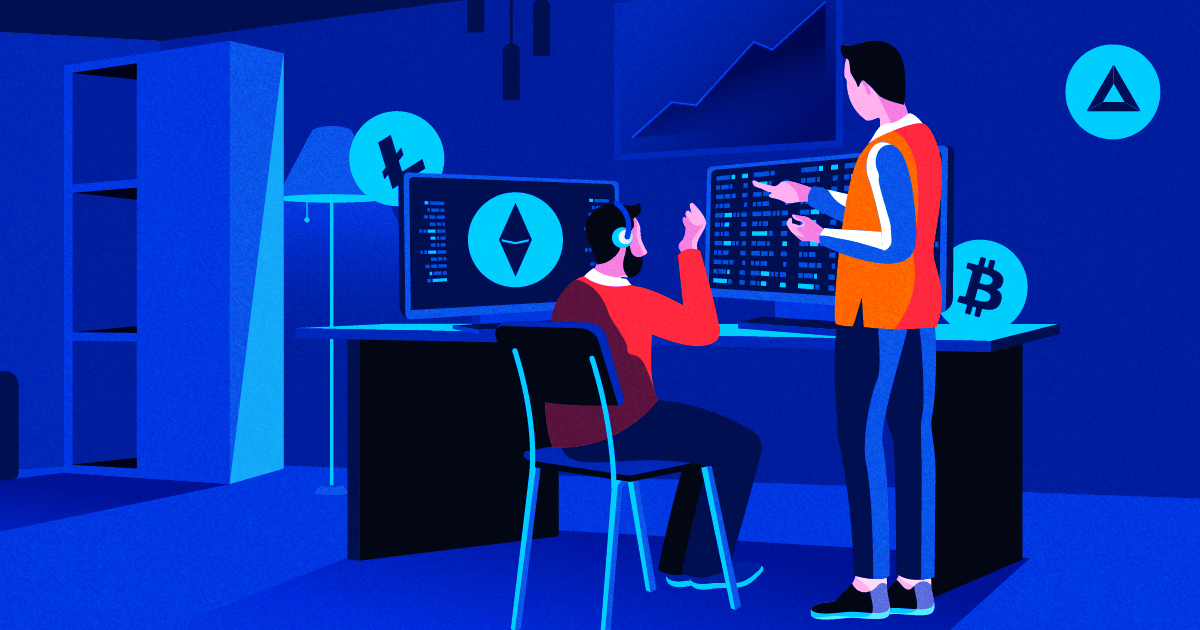Introduction to Crypto Futures Trading
Futures are contracts that enable the buying or selling of an asset at a predetermined price at a future time. Parties are obligated to complete contract terms on the date of expiration. Crypto futures facilitate trading on the future value of crypto tokens without owning them. Two parties enter into a crypto futures contract and agree to either buy or sell an asset at a predetermined price at a future time. Their prices are directly proportional to the value of the underlying crypto.
How Do Crypto Futures Trading Work?
Crypto futures contracts have three vital components.
- Expiration date: This is the date when the contract must be settled at the pre-agreed price. However, you can sell your crypto futures contracts to other crypto traders before the expiration date.
- Units per contract: This metric shows the worth of each futures contract in terms of the underlying crypto. It varies from one crypto platform to another. For example, one bitcoin futures contract can be equal to 50 U.S. dollars worth of bitcoin.
- Leverage: Crypto exchanges allow you to borrow capital to increase your trading value and potentially earn more on your crypto futures bet. Leverage rates can vary from one crypto platform to another.
Read more: Crypto Trading Strategies
Benefits and Risks of Crypto Futures Trading
Crypto futures trading is gaining popularity and offers many benefits to crypto traders.
- Convenience: Trading in crypto futures is easy compared to actual crypto trading, as it requires a crypto wallet and access to a liquid market. The trading volume in crypto futures is a lot higher than spot trading.
- Flexible strategies: Crypto futures allow you to short sell in bulk. Also, there is more room to use different trading strategies to maximize gains.
Crypto Futures risks
There are risks associated with crypto futures trading, such as market volatility, poor trading strategies, and taking higher than recommended leverage.
Getting Started With Crypto Futures Trading
It is advisable to trade crypto futures on a reputable crypto exchange, especially for beginners. Next, set up the account and complete all the verification steps of the crypto exchange. Finally, fund the account to start trading in crypto futures.
Crypto Futures Trading Strategies

Long and Short Positions: Basic Trading Approaches
Long and short positions are two sides of crypto futures trading. Crypto traders open these positions based on how they think the crypto market will trend. Traders take a long position when they expect the crypto price to increase and a short position when they expect the crypto price to decline. They take these positions to gain exposure to crypto without owning them.
Read more: Long/Short Trading Strategy
Technical Analysis Strategies for Crypto Futures Trading
Technical analysis strategies involve evaluating indicators such as candlestick charts, moving averages, support and resistance levels, the relative strength index (RSI), and Bollinger bands etc. You can gauge the emotion of the crypto market and how its price will be affected in the future.
Read more: Guide To Crypto Technical Analysis
Fundamental Analysis Strategies for Crypto Futures Trading
Fundamental analysis strategies involve evaluating a crypto asset’s fundamentals, such as technology, developer team, community, and real-world use cases. It can help you determine when to buy or sell a particular asset.
Read more: Fundamental Analysis In Crypto
Leveraging Trading Bots and Algorithms
Trading bots use algorithms to evaluate market data and execute crypto futures trades.They keep track of the crypto market, looking for specific patterns that match their trading strategies. They automatically execute trades once they identify potential trading opportunities. They operate 24/7 and take advantage of market movements even when the trader is inactive.
Read more: What are Crypto Trading Bots
Risk Management in Crypto Futures Trading
Importance of Risk Management in Trading
While trading crypto futures can be lucrative, it also has risks, such as volatile market conditions. Additionally, you can fall victim to various crypto scams. It is vital to manage the risks associated with crypto futures trading.
Setting Stop-loss and Take-profit levels
Take-profit and stop-loss orders are carried out once crypto prices reach a predetermined level. These orders can be part of your exit strategy for each crypto trade you execute. You should decide on an exit point after each trade, as crypto markets are highly volatile. Hence, setting stop-loss and take-profit levels protects you from incurring heavy losses.
Position Sizing and Risk-to-Reward Ratio
You determine what percentage of your total crypto holding value you are willing to put in a trade with the gains you intend to receive when sizing your position. The risk-to-reward ratio helps determine if a certain amount of risk is worth the potential profit you can make from a crypto futures trade. This ratio varies from trader to trader based on their levels of expertise and risk appetite.
Risk Mitigation Techniques: Hedging and Diversification
Hedging in crypto is when you take a position opposite the current open position in a specific crypto token. Crypto traders deploy hedging techniques as insurance to protect themselves against negative events in the market. The crypto market experiences sudden and sharp price swings. This volatile market that makes you money also has risks associated with it. Hedging helps you manage these risks. If initial market positions trend downwards, the secondary position taken after hedging will make profits, covering losses from the initial position.
Diversifying your crypto portfolio is a simple way to minimize risks in the crypto market. Diversification involves buying various crypto assets instead of putting all your funds in one. Each crypto asset acts as a hedge against another in a diverse crypto portfolio.
Monitoring and Analyzing Market Trends
Tracking Market Volatility and Liquidity
Volatility is one of the vital factors to track when it comes to crypto futures trading. Crypto is vulnerable to price fluctuations influenced by various events. It is essential to keep an eye on the volatility of the crypto market before investing in crypto futures. Additionally, look at the liquidity of a crypto asset to determine its transaction speed, market integrity, and fluidity.
Technical Indicators and Chart Patterns
Technical indicators of a crypto asset can help you understand the underlying trends and patterns. You can make an informed decision about when to trade in crypto futures. It can also provide valuable insights into potential downward trends. Traded volume, moving averages, and the relative strength index (RSI) are some common technical indicators. Chart patterns are specific shapes or formations on price charts that can indicate a potential upward or downward market trend.
Read more: Indicators for Successful Crypto Trading
News and Events Impacting the Crypto Market
Tracking news and events that impact the crypto market can help you make better investment decisions, manage risk, gain an increased understanding, and gain confidence.
Calculating Profits and Losses
You multiply the dollar value of a one-tick move by the number of ticks the future contract has moved since you bought it to calculate profit and loss.
Read more: Ways to Calculate Crypto Profit and Loss
Understanding Fees and Margin Requirements
Fees can impact your potential returns, depending on how you enter and exit the trade. Small transaction fees coupled with other related fees can add up over time and significantly reduce your return. The minimum collateral a trader must have to execute crypto trades is known as the margin. The larger the crypto trade, the greater the margin amount required to complete these trades.
Conclusion
Crypto futures trading offers good opportunities to grow your portfolio. You can increase your crypto holdings with a single trade by using the leverage available in crypto futures trades. Hedging is another unique aspect of crypto futures that can help you earn profits and manage risks.
Read more: Futures Trading Vs Margin Trading
Risk management is vital in futures trading. Setting stop-loss and take-profit levels can also help you minimize your losses. The above-mentioned risk management strategies can help protect crypto holdings, avoid letting emotions make trading decisions, and enable crypto goals. It is vital to do your due diligence and perform proper research before getting into crypto futures trading. Benefits can outweigh the risks associated with crypto futures with proper research and knowledge.
Invest in crypto with ZebPay and join the millions of traders already on the platform.







